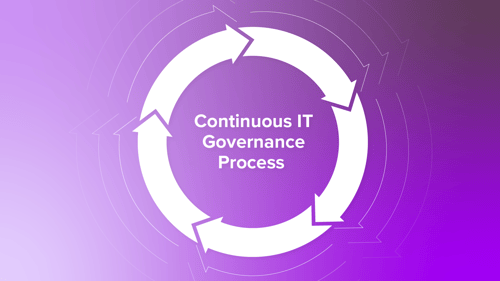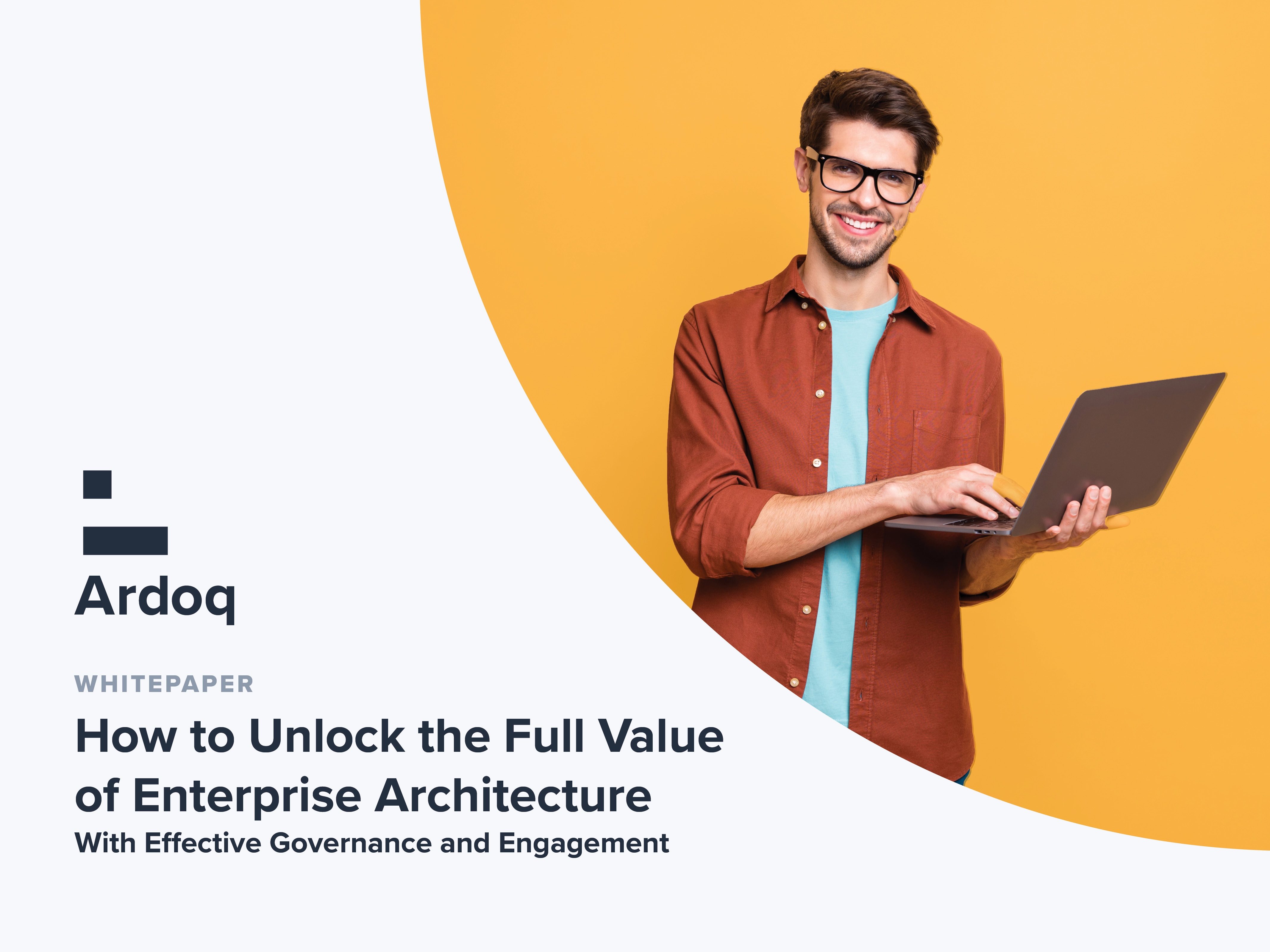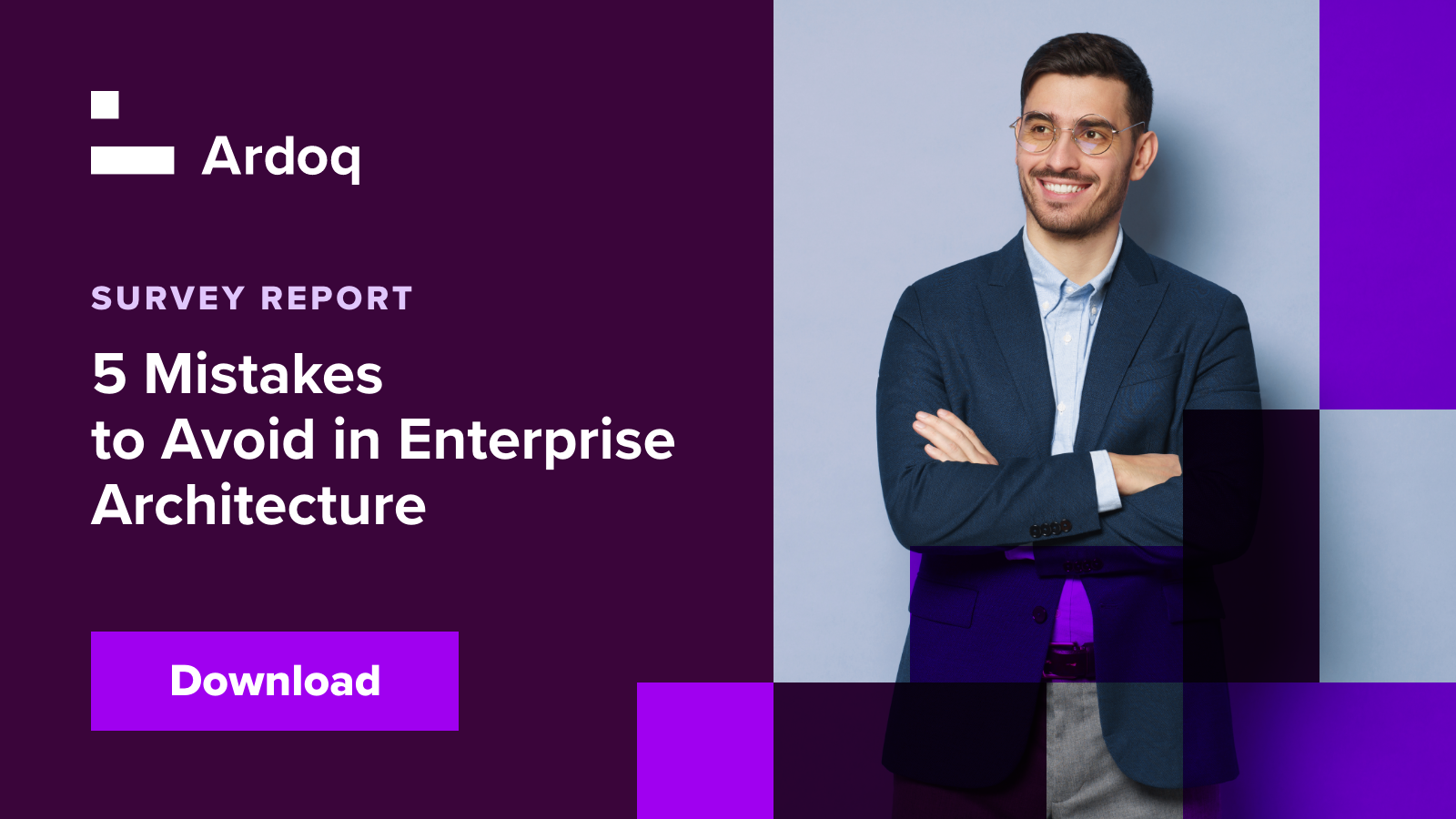Businesses are constantly undergoing change projects—often, dozens at once—to transform themselves into the most innovative, competitive companies in their industries. These projects are dependent on buy-in from the business’s go-to decision-maker: the Chief Information Officer (CIO).
Projects instigated at the C-suite level across large sections of the business and IT can mean significant consequences for cost and benefit. That’s why these projects need to be based on business cases that are thoroughly evaluated beforehand.
While the CIO may have justification for their change decisions, they don’t always have the ground-level insights needed to understand and anticipate the full impact of their strategic direction. It is then up to the enterprise architect to steer them in the right direction.
First, they need to be convinced to listen.
The challenge with some CIOs is that they are wary about whether Enterprise Architecture (EA) can support their own responsibilities simply because they don’t understand EA’s potential or believe it will cost too much or take too much time to execute. Sadly, this means they may not be paying attention to architects or are relegating them to focusing on more minor, IT-centric projects when they could be contributing to the entire business.
We asked over 100 Ardoq customers—real Enterprise Architects (EAs)—about their biggest contributions to the organization, and 82% said it was helping their organization to plan for the future, with 55% saying it was helping ensure that projects align with overall business goals.
However, an Enterprise Architecture cannot achieve goals without the CIO’s support any more than the CIO can give the green light for an idea without this help. When EAs have the organization’s support and are armed with modern enterprise architecture tools to aid their work, they become agents capable of connecting the CIO’s business priorities with the existing organizational ecosystem. This dramatically increases the odds that change projects will lead to successful outcomes.
To get the CIO’s buy-in on Enterprise Architecture’s strategic role, they need to be engaged in ways that give them certainty around the consequence of any change project. They want to know about ROI, time to value, and the results proposed methods will deliver to the business.
What’s In It for the CIO
The CIO decides which projects move forward and which ones don’t, so it’s vital to catch their attention early before change initiatives go into motion.
This might be easier said than done, given that Enterprise Architects can be relegated to the IT department. The value of the EA team must be widely understood and supported in order for them to be included directly in the planning process.
An Enterprise Architect has insights into how the business and IT ecosystems—and the systems, people, and projects within them—interact that CIOs need to ground their ideas. Business today is IT-intensive, so if CIOs don’t consider how their change projects will impact the technological side of operations, they’re likely to run into unexpected roadblocks and leave themselves vulnerable to unintended consequences.
More than highlighting credentials, EAs demonstrate to CIOs their value by addressing their business concerns. The CIO generally has several key objectives, such as making sure that:
- The IT department runs in a well-governed way
- Solutions are high quality and cost-effective
- Decisions can quickly deliver change when it needs to happen
To communicate with CIOs, EAs need to be able to present straightforward overviews of how change projects will influence these priorities. Ardoq can help with these conversations by presenting change recommendations in a way that speaks to a CIO's priorities. It can create a visual of the business’s As-Is state by populating the platform with the organization’s tech and business variables. Then use the Scenarios tool to model the outcomes of how proposed changes would impact that state.
Modeling multiple scenarios side-by-side shows the best course for realizing defined KPIs without jumping into an architecture discussion. The ROI becomes clearer—the cost of the project, how much money the company can save with one change over another, or the time-to-value, for example. In the same way, it becomes easier to show why certain projects aren’t in the best interest of the business and to steer them away from them.
Once the CIO sees the value of enterprise architecture in planning projects, chances are the team will be invited into the decision-making process earlier on.
Back Recommendations with Reliable Data
Engaging CIOs is only half the battle—they also need to be convinced to act on recommendations. Leveraging reliable data is the way to do that, as data reliability helps CIOs to make more robust, confident decisions during change.
There are other variables to consider that won’t appear in datasheets—like unions, internal and external politics, reputation, etc.—but starting with data gives some guarantee of success in navigating change. It offers a predictable baseline that can then manage other variables.
Reliable data is up-to-date data. Businesses change quickly, which means data can quickly become outdated, sabotaging the accuracy of EA plans. Instead of wasting time and manpower maintaining data, employ modern Enterprise Architecture software to continuously collect and manage the information.
Once projects are launched, the CIO needs to know how they are progressing and affecting other variables across the company. The volume of change projects can quickly become disruptive if they’re not acutely managed. Ardoq can assist with this through its automated data collection capabilities, monitoring how defined changes impact the organization over time. This eliminates the need to continuously check on data sources to ensure they are still accurate within the software if changes to the projects are made.
Not every inch of the business needs to be documented to move EA efforts forward. Change initiatives on the CIO’s mind can drive how data collection is prioritized. A strong holistic viewpoint gets the team started on driving meaningful change sooner, while still allowing EAs to operate with certainty over the change’s outcomes.
While engaging the CIO should be a top priority, engaging the wider organization is also crucial for the success of change projects, as coworkers can also share robust insights that software can’t capture. As evidence, when we asked our customers how important it is to engage the wider organization in their architecture process to achieve their goals, almost 90% said it was important. Additionally, 33% of respondents said that engaging the wider organization is important because they want key stakeholders to see the value in their architecture data.
The value of Enterprise Architecture encourages others to participate in the effort. By assigning system owners within Ardoq, democratizing the data collection process becomes easier. Then, the information relayed to the CIO is always up to date and sourced from those within the business who know the subject matter best.
Armed with Ardoq: Show the Importance of Enterprise Architecture to Your CIO
Engaging the wider organization is important for EA efforts to succeed, but the CIO makes decisions and moves projects forward—or blocks them. Working closely with them and speaking their language is, therefore, key to making headway as an Enterprise Architect. To win them over on EA’s value, remember to:
- Be proactive in engagements to influence change projects before they have the chance to falter
- Back big ideas with data that reveals the realistic outcomes of proposed changes
- Automate and democratize data collection to reach a quicker time-to-decision
Armed with Ardoq, any team can act with confidence when consulting the CIO, using data to make quick, strategic decisions even amidst constantly changing business environments. Ardoq improves decision-making in the central change processes where the cost of change is highest so that the CIO can be confident they’re using their time and resources effectively and efficiently.
Keep the CIO's confidence by dodging common Enterprise Architecture missteps. Read the 5 Mistakes to Avoid in Enterprise Architecture report.
 Leah Plotz
With over ten years of experience working in content, Leah wants to make sure Ardoq empowers engagement and collaboration throughout an organization.
Leah Plotz
With over ten years of experience working in content, Leah wants to make sure Ardoq empowers engagement and collaboration throughout an organization.






/Logos/Ardoq/RGB_Ardoq_Logo_Stacked_White_Monochrome%201.png?width=80&height=77&name=RGB_Ardoq_Logo_Stacked_White_Monochrome%201.png)


